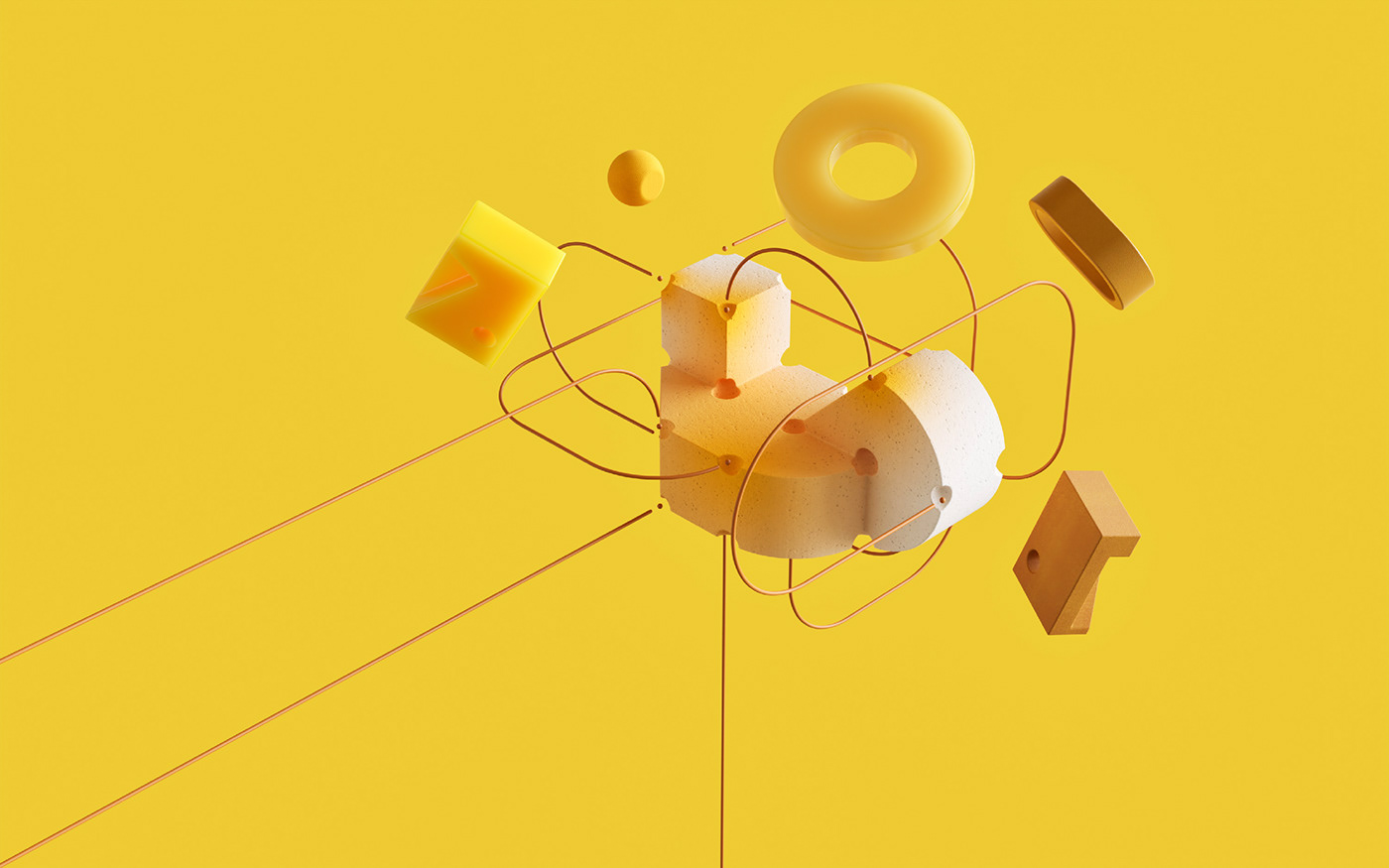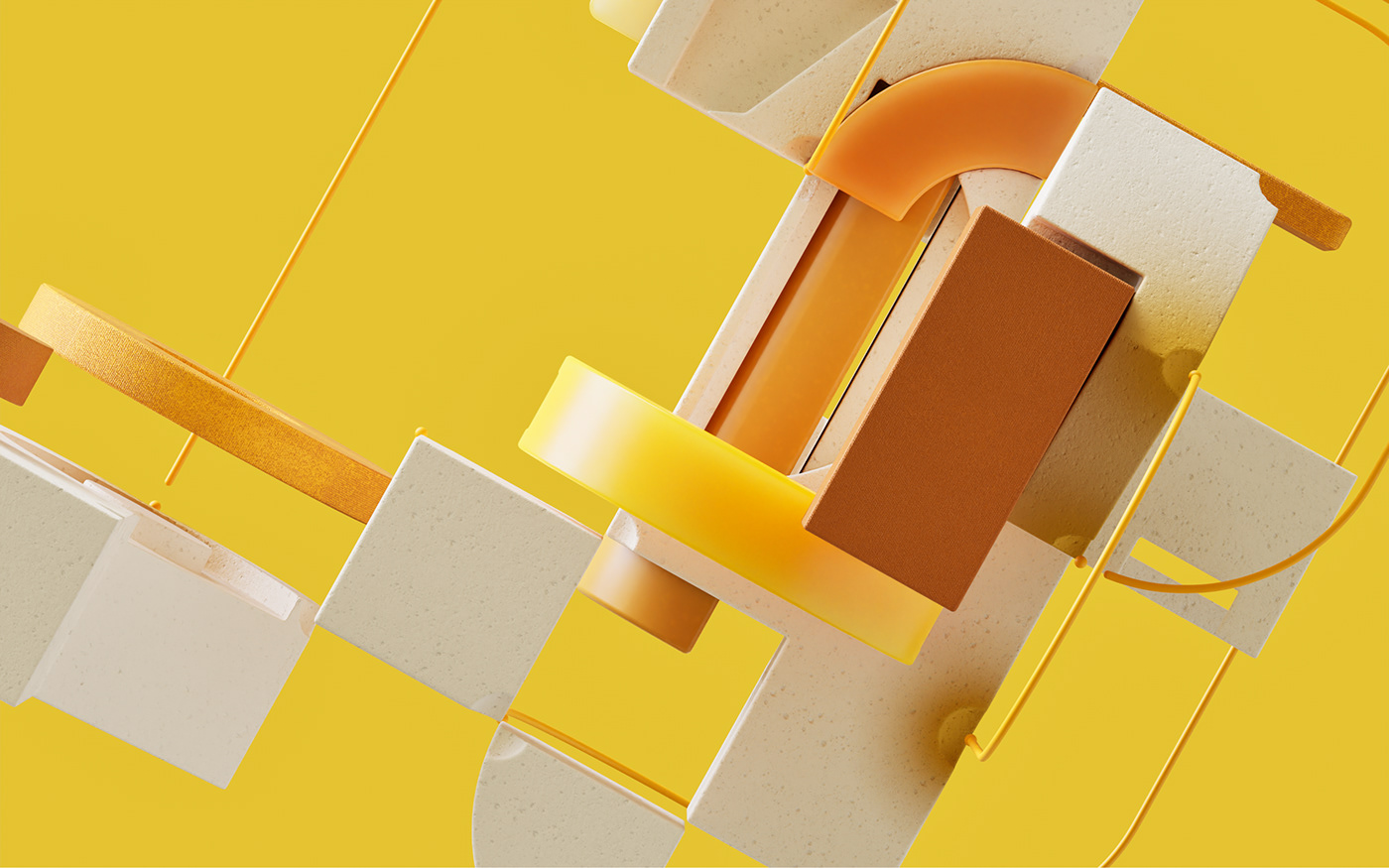Google DeepMind
3D Design System
3D Design System
Google DeepMind and MultiAdaptor reached out to us to collaborate on the ambitious endeavour to redefine the visual identity of this profoundly iconic brand. This branding project aimed not only at a mere cosmetic makeover but also at delving into the conceptual realm, striving to articulate an abstract visual representation that would encapsulate the intricate essence of DeepMind's visionary pursuit of artificial general intelligence (AGI).
The collaborative mission was multifaceted, encompassing the cultivation of a design language that exudes contemporaneity, friendliness, and approachability, while creating design elements that intricately mirror diverse facets of the overarching concept of artificial general intelligence.
The collaborative mission was multifaceted, encompassing the cultivation of a design language that exudes contemporaneity, friendliness, and approachability, while creating design elements that intricately mirror diverse facets of the overarching concept of artificial general intelligence.



As we embarked on this creative journey, the challenge lay not only in the aesthetic metamorphosis of the brand but, more significantly, in distilling the complex intricacies of AGI into a visually coherent and compelling narrative. DeepMind's aspiration for AGI, representing a form of intelligence that transcends specific tasks and domains, required us to conceptualize a design language that resonated with this profound vision.
On one hand, we wanted to create a design language that felt contemporary, friendly, and inviting, radiating the trust and openness that DeepMind embodies. On the other hand, we were challenged to conceptualize and materialize visual elements that metaphorically depict the intricate workings of artificial general intelligence. This required a deep understanding of AGI's core concepts and the ability to translate them into tangible, aesthetically pleasing forms.
Beyond the surface aesthetics, we set out to design visual elements that serve as metaphors for the various aspects of AGI—whether it be the interconnected neural networks, the control mechanisms of the agents, or the overarching safety net. The result of this design development process is DeepMind’s own unique 3D design system that utilises three key components to create an image branding that not only is recognizable and versatile in its appearance, but also illustrates the hugely complex concepts of artificial general intelligence.







Design Systematic
In our endeavor to encapsulate the intricately complex workings of AGI, we've crafted a visual narrative using a variety of shape languages, each representing a different aspect of this complex topic. All of these elements, when interwoven, form a dynamic visual language that reflects the boundless potential of artificial general intelligence.
Simplified pristine solid objects represent the various different Machine Learning models that we have access to today. These shapes are either held in place by the larger hero shape or are floating in space offering the opportunity to put them to use. Similar to the Machine Learning models, these objects are resolute in their purpose and appearance, while offering an open expanse for utilization.





Different to these solid shapes are the larger hero objects that form the focal point of each composition - they are the visual representation of the Agents and therefore their shape language is flexible in its appearance, size and arrangement.
To create this dynamic spatial expression, we created a visual system that follows clear rules and a coherent logic, while offering a wide range of variability. The appearance of these hero objects undergoes fluid transformation, contingent upon the specific Machine Learning models to which they are connected, thereby illustrating the dynamic interplay of the agents and models. They are orchestrating the arrangement of all visual components, either providing support to the model shapes by holding them in place or allowing them to float freely in space, symbolizing the potential applications at our disposal.
DeepMind Image Tool
When we started developing the DeepMind 3D Design System it was clear from the getgo that the ultimate goal will be the creation of a standalone application tailored to the needs of the design team at Google DeepMind. This application would empower the inhouse team to effortlessly craft images in a cohesive visual language. Our conceptual ideation, therefore, aimed at achieving a dual objective: On one hand, we sought to forge this distinctive and recognizable visual language that embodies the core principles of DeepMind. On the other hand, we were committed to ensuring that this design system would serve as the foundation for an independent and versatile creative application.
Therefore the 3D design system was created to possess distinctive visual characteristics, uniquely ownable, while simultaneously providing the flexibility needed to facilitate the creation of a diverse array of compositions and narratives. After the completion of the first phase of this project, we continued into the development of the standalone application. This application is poised to leverage the design system, empowering users to craft new images within a consistent visual language. Starting with the user experience and interface, our paramount goal from the outset has been to fashion an app that exudes intuitiveness and approachability. The application strikes a balance between user-directed interaction and semi-procedural algorithms, streamlining the often tedious tasks required to achieve a specific visual language. This unique blend ensures the software is not only incredibly user-friendly but also clarifies its functionality as users navigate, all while providing a robust system capable of generating distinctive compositions and layouts. Recognizing that not every user may possess prior experience with 3D packages, we prioritized creating an interface that caters to both novices and seasoned users alike.
In addition to adopting a step-focused approach to the user interface, we embraced a holistic philosophy of 2.5D, strategically refraining from delving into full 3D until the final stages of the software workflow. The primary viewpoint during scene layout, which we called “Blocking”, is anchored in an almost isometric camera perspective. The emphasis of these first steps lies on initial spatial layout considerations, deferring the creation of specific frames until later stages of the process. This nuanced approach ensures users can easily navigate the 3D layout of their scenes before delving into finer, frame-specific details.
The scene layout is created through the placement of simple cubes, offering users the freedom to place and move them within a designated volume. These cubes seamlessly align with a spatial grid, ensuring precision in their arrangement. Once the user establishes this foundational input, the application harnesses a suite of procedural algorithms to transform these basic shapes into what we term "Agent shapes."
All of the following images are created using the DeepMind Image Tool.







In the second chapter, called “Editing”, attention is directed towards the secondary elements within the scene: the "Model shapes" and the procedural generation of connecting lines. Following the placement of initial subtracting model shapes in the previous steps, users gain the ability to edit, create new, or delete existing ones in this chapter. To ensure the consistency of the visual language, we aimed to strike a balance between customizability and limitation. This approach guarantees both creative freedom and consistency in the overall visual aesthetic.
In the culminating chapter, the focus turns to the creation of the final frames. Finally the application grants the user the liberty to navigate the 3D scenery freely, employing an array of tools to manipulate the camera's position and rotation. Our intention was to create a situation that feels similar to the immersive experience of a photographer working within a defined scene. The primary objective in this step is to emulate the photographer's pursuit of the ideal framing, offering tools to fine-tune camera settings and lighting, thus allowing users to focus solely on achieving the perfect visual composition. Once the user has arrived at the desired frame, the application allows the rendering of high-quality images up to 8K resolution within a few minutes.
At the project's inception, our aim was to forge a distinctive and recognizable 3D design system tailored for Google DeepMind. This versatile design system, once established, transcends its initial purpose and finds application in diverse forms. From a collection of traditionally rendered images to intricate animations, culminating in the development of a standalone application. This application now empowers the design team at Google DeepMind to harness the custom visual language, enabling the creation of their own unique narratives within the framework of this 3D design system.




Visual development
In the creation of the final design system, we went through an elaborate and wide visual development process as the fundamental tool for achieving innovative visual languages. This process ensures that we create something new and fresh – something that is able to consistently and cohesively communicate the brand’s intended message, while being unique in appearance. We believe this is a crucial aspect of establishing a strong visual identity and ensures that the brand has a unified look and feel that is easy for the audience to recognize.
While this process usually happens behind closed doors and is not visible to the public, each step of this process is present in the final outcome. And in this project it is especially apparent, since the development material that that was created clearly shows the steps towards the final design system. Therefore we are keen to share a selection of images below, concepts and sketches that were created in the process of defining the design system for DeepMind.






























































































Credits
Client: Ross West, Gaby Pearl, Eleanor Tomlinson, Hollie Dobson, Dominic Barlow
Design and Direction: someform Studio
Creative Team: Matthias Winckelmann, Helge Kiehl, Yannik Wenk, Dominic Grejc, Chris Hoffmann, Vitaly Grossmann, Conrad Ostwald
Agency: Chris Copping, Ben Brookbanks, Nancy Case, Joe Warburton, Chris Ireland at MultiAdaptor
Developer Team: Matthias Winckelmann, Julius Steinhauser, Helge Kiehl, Yannik Wenk at someform Studio, Hannes Väisänen, Rosaline van Schaik, Kristian Sivonen, Joni Lappalainen at Dreamloop Games
Agency: Chris Copping, Ben Brookbanks, Nancy Case, Joe Warburton, Chris Ireland at MultiAdaptor
Developer Team: Matthias Winckelmann, Julius Steinhauser, Helge Kiehl, Yannik Wenk at someform Studio, Hannes Väisänen, Rosaline van Schaik, Kristian Sivonen, Joni Lappalainen at Dreamloop Games


